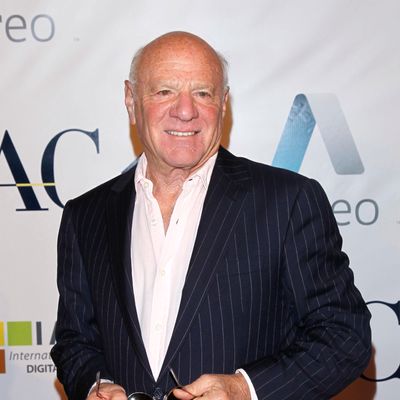
Yesterday, a Second Circuit appeals court handed down a decision that delighted tech geeks and enraged giant media companies like CBS, Comcast, Disney, and Cablevision.
The decision was about Aereo, a year-old start-up, backed by media mogul Barry Diller, that allows users to stream live network TV to their phones, tablets, and other devices. It’s a simple-sounding concept, but like many Silicon Valley brainchildren, it has an element of subversion to it. And naturally, media conglomerates sued the bejeezus out of Aereo in an attempt to shut it down.
Here, briefly, is how Aereo works: You pay $8-ish a month, and get assigned a mini-antenna, roughly the size of a dime, that is located in a warehouse in Brooklyn. Aereo has thousands of these antennas, each of which is assigned to a single user and connected to a single DVR-like device. When you want to watch, let’s say, “The Voice,” Aereo’s app pulls the show from your antenna, streams it to your device, and makes a copy that is only viewable by you. If 40,000 other Aereo users are watching “The Voice” at the same time, there will be 40,000 dime-sized antennas streaming 40,000 identical copies of the show onto 40,000 devices and into 40,000 DVRs.
If that sounds absurd, it’s because Aereo’s entire business model is based on a legal head-fake. Under copyright law, 40,000 people with their own antennas can watch TV at home for free, but if you want to have one giant antenna that picks up TV shows and distributes them to an audience of 40,000 people, the law calls that a “public performance,” and you have to pay a copyright fee to do it. Aereo didn’t want to pay those fees, so it figured out a way to make what is essentially a simultaneous mass broadcast look like lots of little broadcasts.
Aereo’s mini-antenna strategy is a genius end-run around copyright law, but it’s hard to see how it passes the smell test. In fact, the entire thing is so ludicrous and overly technical that it seems like something a bored law student would cook up. It’s as if you got around a local ordinance prohibiting public rallies of more than 1,000 people by organizing 1,000 simultaneous, coordinated rallies of one person each.
Time and time again, courts have shut down or otherwise ruled against schemes similar to Aereo’s. In 2011, a federal judge put the brakes on Zediva, a DVD rental service that, instead of mailing you DVDs or streaming them to your TV à la Netflix, would place the DVDs you requested in a physical DVD player at its office, then stream that player’s output to you over the Internet. Twenty years earlier, courts ruled that a hotel could not legally run a video-on-demand service that consisted of a bunch of VCRs in their equipment room, which were wired to in-room TVs.
The legal precedent set by those cases should have made deciding against Aereo easy. And yet, by a 2-to-1 vote, the start-up got its way.
The one person on the Second Circuit’s three-judge panel who threw up a red flag was Denny Chin, who wrote a scathing dissent calling the company “a sham.” He wrote:
The system employs thousands of individual dime-sized antennas, but there is no technologically sound reason to use a multitude of tiny individual antennas rather than one central antenna; indeed, the system is a Rube Goldberg-like contrivance, over-engineered in an attempt to avoid the reach of the Copyright Act and to take advantage of a perceived loophole in the law.
I would have sided with Judge Chin. It’s possible to argue that America’s copyright system is a chaotic, outdated mess, and that the laws that treat broadcast TV like other forms of copyrighted content should be changed anyway. But that’s a policy judgment, not a legal one. And within the existing framework, it’s hard to see Aereo’s mini-antennas as a legitimate and legal solution.
For now, though, Aereo has gotten a lucky break in the courts. Chalk one up for the disrupters of tech, and one more for their exceedingly clever lawyers.





























